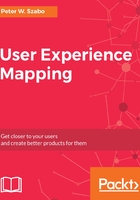
Lean Startup
The Lean Startup User Story template is inspired by Eric Ries' book, The Lean Startup. It adds actionable (also auditable and accessible) metrics to user stories while dropping the role/persona/who from the previous templates altogether.
View shopping cart will move shopping cart abandonment, related customer support queries, and shopping cart average value.
A start-up, especially in the early seed stage, should have only one persona. So, dropping the role is one of the benefits here. Replacing the reason (outcome) with actionable metrics is the real difference, unfortunately, for the worse. At the stage of considering a new project or discussing whether we should add new features to an existing one, we are far from measuring the effects of those features. If we add actionable metrics, senior management will ask for an estimate. For example, how big is the impact of the view shopping cart feature on the number of customer support calls? There is no sure way to have an acceptable estimate for changes in metrics this early before the development has even started, so it's pretty much a wild guess. At this stage, you can admit that it's possible that the effect will not even be measurable, or if it is, it can be within the margin of error. Alternatively, you could come up with a number. I suggest 42. Not just because I'm a sci-fi fan, but because when pronounced separately in Japanese, shi ni (four two) sounds like the word death. That's exactly what will happen to the project if you base user stories on wild guesses.